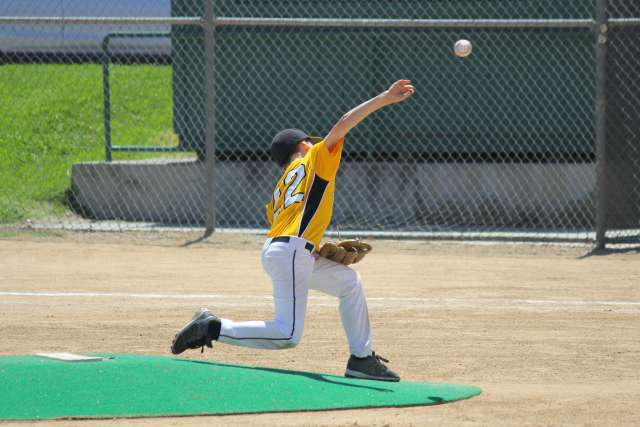Most people may never have heard the term “sports specialization,” but for doctors who treat young athletes, it has become all too familiar, a reference to a focus on a single sport that can lead to serious injury. Recent data shows that youth sports specialization can be detrimental both physically and emotionally for athletes under age 18.
“We have the studies to show that the chance of serious musculoskeleltal injury from repetitive microtrauma is increased at a time when, due to normal adolescent growth, the body may be particularly vulnerable,” says UCLA orthopaedic surgeon Dr. Kristofer Jones. “The literature shows a clear correlation between training volume and intensity and injury risk.” Dr. Jones defines sports specialization as intensive, year-round training in a single sport at the expense of participation in other sports. As a result, developing children are focusing on specific athletic skills, such as pitching, rather than playing a variety of sports and training to improve core physical principles, such as flexibility and balance. This has led to an increasing number of related injuries, Dr. Jones says.
“From a cultural standpoint, we have created an environment in youth sports where the definition of success is focused on the development of elite skills and winning opposed to focusing on the development of basic physical health.”

The problem is not limited to baseball. Repetitive-stress injuries also are common in other high-velocity sports. In basketball, many players get “jumper’s knee,” or tendinopathy. Common football-related injuries include shoulder and knee ailments, and cross-country and track-and-field athletes may end up with bone-stress injuries from the constant heel strike on the pavement or from jumping.
To avoid overuse injuries, Dr. Jones recommends limiting overall weekly and yearly sports participation time, staying away from repetitive movement and providing scheduled rest periods. Even Major League Baseball has taken steps to help curb injuries in young athletes by providing a pitch-count guide on its website to help coaches and parents track how many pitches their athletes can throw daily.
The exact cause of sports specialization injuries may vary, but a unif ying factor is a desire and determination for the athlete to be great, whether that is being driven by the athlete, a parent or a coach. “From a cultural standpoint, we have created an environment in youth sports where the definition of success is focused on the development of elite skills and winning as opposed to focusing on the development of basic physical health,” says Dr. Jones, who is head team physician for the Los Angeles La kers and a team physician for UCLA Athletics. Young athletes are attracted to the heightened sense of fame and celebrity that comes with being a famous athlete, and “parents and coaches of ten focus on developing t he at h letic potential they see through their selective lenses, and the attainment of success is often measured by winning or obtaining a college scholarship or professional contract, Dr. Jones says.
Young athletes today often are larger and stronger than in the past. “We are seeing kids with bigger and more developed bodies and better skill sets, but we have to find that balance so that we can allow them to train in a way that makes them better without placing them at such a high risk for injury,” Dr. Jones says. In addition, “we have to take into account the mental toll that comes along with specializing, as data shows it can lead to burnout as well. “ W i t h p r o p e r e d u c a t i o n a n d a multidisciplinary approach, we can ultimately help all stakeholders find an appropriate balance for training that continues to help develop athletic skills, while also maintaining a safe and enjoyable environment.”

